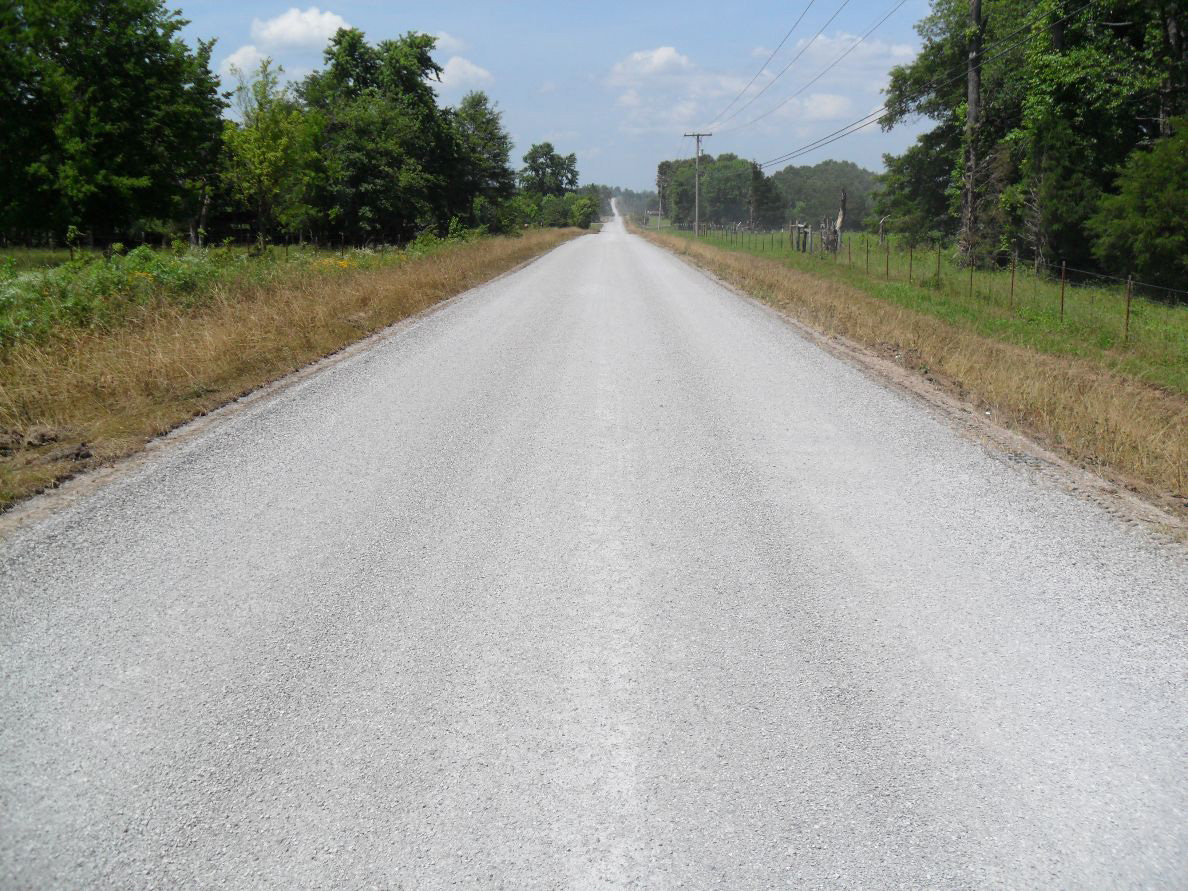August 23, 2018
Innovation of the Month:
Pavement Preservation (When, Where, and How)
States and localities are exploring the use of pavement preservation treatments to address issues on their roadway networks.
Because of major rainfall and temperature swings, the condition of some roads in Independence County, AR, declined rapidly. Heavy commercial traffic also caused distresses, including severe cracking and oxidation. With limited funding, the county initially considered a single chip seal to solve the cracking, but the cracks were too deep. A mill-and-fill application, in which 1 to 2 inches of asphalt are milled and replaced with a new hot-mix layer, was also considered but found to be too expensive. The county finally chose a chip seal and mass crack seal emulsion designed to restore severely cracked, oxidized surfaces.
The treatment uses an “apply-and-scrub” method in which emulsion is sprayed and a mechanized scrub broom is used to force the emulsion into cracks to ensure voids are filled. Aggregate is applied over the emulsion and compacted, and traffic can return to roads in hours. The county used this technique on about 5 miles of cracked roads, saving tens of thousands of dollars over the traditional mill-and-fill method.Â
The New Jersey Department of Transportation (NJDOT) is piloting several pavement preservation treatments, monitoring their performance, and developing specifications to standardize their use. NJDOT is constructing two ultra-thin bonded wearing course projects and evaluating them for constructability and performance. NJDOT is also using an ultra-thin paver on several high-performance thin overlay projects. The paver sprays a polymer-modified tack coat in front of the asphalt mixture, eliminating tracking issues associated with standard tack coat application and increasing bonding of the thin overlay to the pavement, which is expected to result in superior performance.
For information and technical assistance on pavement preservation, contact Jason Dietz of the FHWA Resource Center, Thomas Van of the FHWA Office of Infrastructure, or Antonio Nieves of the FHWA Office of Asset Management, Pavements, and Construction.
Colorado Applies 2D Hydraulic Modeling to Improve Project Delivery
The Colorado Department of Transportation found that using two-dimensional (2D) hydraulic modeling to supplement traditional 1D hydraulics yields benefits such as savings on material costs and enhanced teamwork during project development. On a project to realign a highway encroaching on the South Platte River channel, conducting 2D analysis allowed CDOT to select a turf reinforcement mat instead of riprap for erosion mitigation, saving $2 million on material costs. The project demonstrated that conducting 20 to 40 hours of 2D exploration at the prescoping stage could potentially save millions on future projects. On a project to retrofit 16 structures over the South Platte River to reduce scour potential, use of the 2D models helped CDOT optimize the structures for scour protection while saving $500,000 on riprap for the project. For information, contact Brian Varrella of CDOT. For information and technical assistance on collaborative hydraulics, contact Scott Hogan of FHWA.
Florida Recognized for Diverging Diamond Interchange Project
The Florida Department of Transportation’s (FDOT) first diverging diamond interchange (DDI)—and the Nation’s largest with six lanes in each direction–is among the projects recognized in the 2018 southeast regional America’s Transportation Awards competition. When FDOT constructed the DDI at Interstate 75 and University Parkway, the agency cut construction time by building a temporary bridge that allowed for the demolition and reconstruction of the existing bridges without reducing lanes. FDOT also minimized traffic delays with an adaptive signal control system that constantly measured the number of vehicles queued in each lane. Since the DDI opened, commuters have experienced a 40 percent reduction in travel delays and crashes have declined by up to 50 percent. An FDOT video provides an overview of the DDI. For information, contact David Amato of FDOT.
About EDC
Every Day Counts, a State-based initiative of the Federal Highway Administration’s Center for Accelerating Innovation, works with State, local, and private sector partners to encourage the adoption of proven technologies and innovations to shorten and enhance project delivery.



